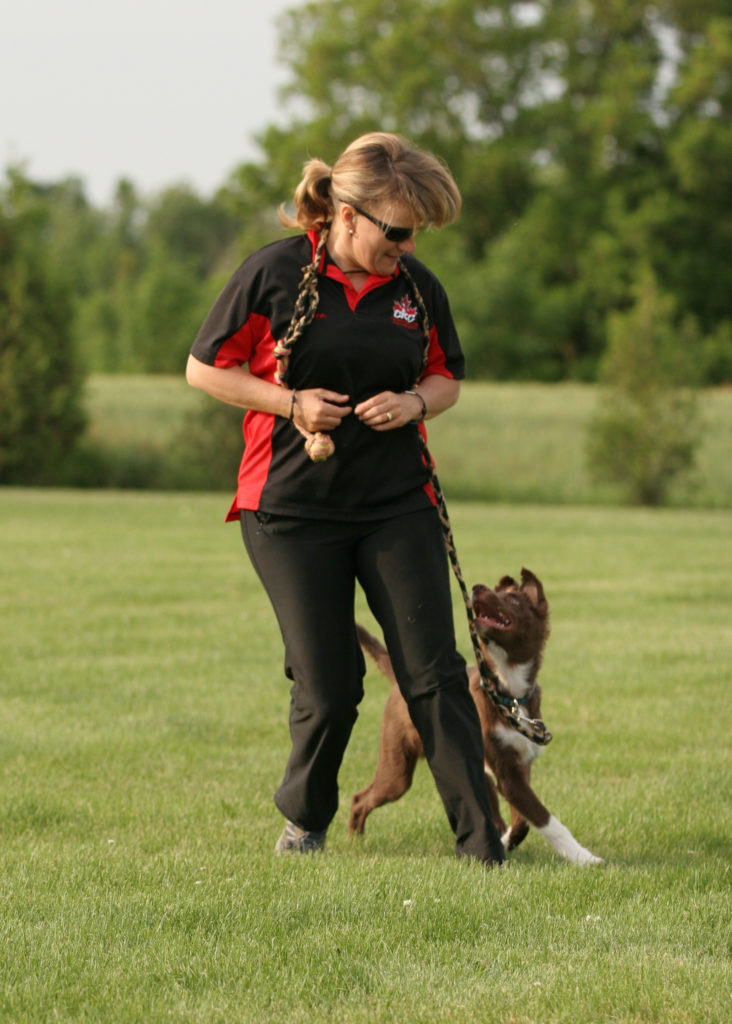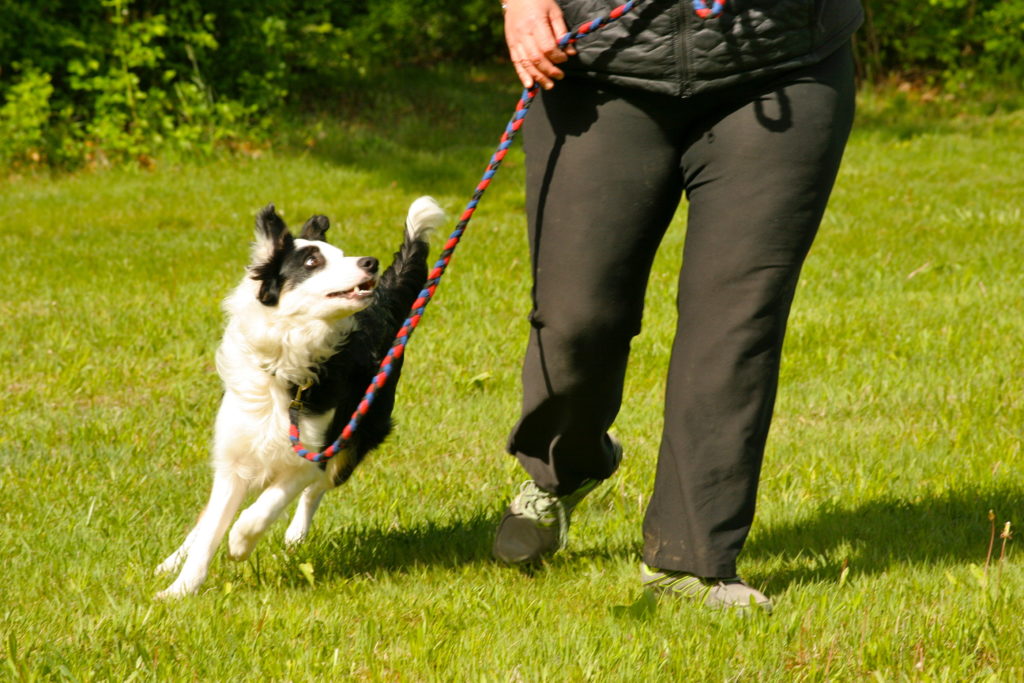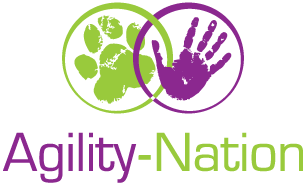 One of the most frequent questions we see as dog trainers is “how do I stop my dog pulling on the leash?”, and it’s not just in the usual dog training channels you will see this. It’s everywhere on the internet. It’s heard at the dog park, the vet, on the street, heck, it might also be the topic of dinner party conversations.
One of the most frequent questions we see as dog trainers is “how do I stop my dog pulling on the leash?”, and it’s not just in the usual dog training channels you will see this. It’s everywhere on the internet. It’s heard at the dog park, the vet, on the street, heck, it might also be the topic of dinner party conversations.
The responses to this question are right up there with housetraining on the quality of the advice you will see …. some of it is very good, some of it is very bad, and some of it is harmful. Yes, stopping a dog pulling on lead is something everyone has an opinion on, even if they have never had a dog.
BUT, here’s the thing, if you ask me, my team or my students “how do I stop my dog pulling on leash?”, we don’t have an answer for you. That’s because we don’t think in terms of stopping our dog from doing things. We decide what we want our dog to DO, and train that. I’ve covered this before on my blog in “Where the Heck is Do-Land, Anyway?“.
What we want our dog to DO is to walk near our side so that the leash is loose. Once we determine what we want, we can build our dog’s value for doing that. Building value means training in a way so that our dog comes to LOVE what it is we want him to do and will make a choice to do just that, anywhere, anytime. The very first step is educating our dog in HOW to make great choices …. and if that’s a new concept for you, join in with my free ItsYerChoice Summit, and I’ll help you see how fun and easy it can be!
Loose Leash Walking and the Reinforcement Zone
Loose leash walking starts with you understanding your dog’s “Reinforcement Zone” (RZ). I’ve got a short clip below for you from a video in our Recallers program. The clip explains what RZ is and how you can use it to your advantage!
If we create a Reinforcement Zone that is very specific for our dogs, that’s where they’re going to want to hang out. For most people, the dog’s Reinforcement Zone is right in front of them. And here’s why …. say you’re sitting down and watching television and your dog comes up, you’ll talk to him and reward him right in front of you. You give your dog his dinner dish, and it’s in front, so the association for your dog is that it is rewarding to be in front. Even if you just give your dog a cookie for nothing, chances are, he will be in front of you. If you are sweet-talking your dog, he’s likely in front of you.
You’ve got all this reinforcement happening in front. The dog figures out that in front of you is where the good things happen. The challenge with that is when you’re trying to walk your dog on leash, you don’t want him in front. You have to fight against all that reinforcement you have put in for your dog being in front in everyday life.
You can make changes starting today! Be mindful of where and how you reward your dog. It does not matter how old your dog is, or his history, you can create a Reinforcement Zone by your side, and it starts in general daily life.
Rehearse Successful Loose Leash Walking
If you want your dog to walk on a loose leash, it’s about rehearsals of doing just that. You need to set your dog up for success to earn reinforcement by your side. While you are working on loose lead walking (LLW), you could put your dog on a harness for the times you know you won’t be ‘training’ LLW, and he is likely to pull. Make sure the harness is not one that will restrict the dogs shoulders.
But when you have your dog on a lead and collar, your goal is to have no pulling. Visit my blog on D.A.S.H. for the sequential stages of training that we encourage trainers to follow. If you need more help on rehearsing success, I wrote a post years ago covering the appropriate use of a Head Halter. A Head Halter will allow us to give our dog a great deal of reinforcement for walking on lead in the position we want and set him up for success.

Know what you want your dog to DO, and set up your training to rehearse success.
Where is Your Dog’s Reinforcement Zone?
What I’d like everyone to do right now is to start noticing where your dog’s RZ is. Every dog has a RZ … the place he will seek to find reinforcement. That RZ may change depending upon who he is with or what environment the dog is in. Once you are aware, you can create an RZ for your dog that is by your side. Soon it will become a new habit to reward your dog at your side and that will give you and your dog many benefits. Next week, we’ll look at RZ for Dog Sports.
Let me know in the comments what you notice about your dog’s RZ in daily life and where your dog shows you his RZ currently is.
Today I am grateful to have been able to combine a business trip to Texas this week with a catch up with friends.
Update: I’ve now got a full playlist on YouTube with videos all about Loose Leash Walking to help.






Great advice & ideas we choose what we want our dogs to Do and rehearse on repeat 🩷
Currently enrolled in Recallers and still have not found a solution to this issue. My 1 year old Gordon Setter has high value for treats and/or toys of any kind in the house and in the large back yard. When he is outside and starts barking at a stray dog, cat or wild critter I can call his name once and he flys into the house. But once we leave to go anywhere else I have not found anything that he will respond to. Not his name, food of any kind or toy. It’s like a wall has come between us. He currently is on a head halter which he no longer paws to try and get off, but still pulls.
I am a bit confused, Susan appears to be saying give treats only from the treat zone at your side but links to a video in the it’s your chose summit and then rewards good choices from the front. Is the treat zone reserved for walking activities?
Hi, my 10 week old pup grabs the leash in his mouth and won’t let go. I have tried to distract with food, a toy, stopping moving, changing direction , anything I can think of. I cannot keep the leash out of his mouth for more than about 1 second. No idea what to do here! Help, please!
Hello Barb, let us share another resource with you. http://www.shapedbydog.com/16 this may help you problem solve as well as venture into more training options Susan has on her podcast/blog and YouTube videos.
Great article, as always!
Can you tell me the harness that Susan recommended and gave away on her video?
I assume you are ok with multiple RZs, depending on context. In front for obedience recall. At handler’s left hip for obedience heel. Etc.
Hi Richard, Reinforcement Zone for us is the area beside your hip either side (of which you can also name “side/close’ once you love the behaviour). As for Obedience behaviours these are precision behaviours which we would name in training as ‘heel’ or ‘front’ and would be really defined as a very specific precise position behaviour. Susan, having come from competition obedience herself she is very detailed in the training of heel/front for her competition behaviours. You are right both they are highly paid areas when training and competing but when we refer to “reinforcement zone’ its a gross behaviour which is beside you either sitting/moving for loose leash walking or transitioning between obedience behaviours or following your handling in an agility ring while running. It is not as precise as ‘heel (dog’s head to shoulder is to be in line with the handler’s left hip) or Front – a recall to center to await a finish cue. Hope this helps. Lynda(Susan’sTeam)
This is fascinating. I never thought about the dog coming to the front for treats, yet on a walk I want him by my side. Luckily I have taught side and if he can’t get my attention comes to my side, so going to work on this.
My pup is now 18 months and 80 lbs full of love. I was very consistent with leash walking, or so i thought. From the the age of 4 months, when i got her, we practiced leash pulling. As she got older she stopped pulling much but all bets are off for squirrels. Then I read your article and a light came on and it all made sense. Within a very short amount of time, my girl is now walking nicely on my side without her horrendous pulling, unless of course she sees a squirrel. So thank you fro the article. Your advice and explanation made so much sense.
What specifically did you do to help her walk loose leash consistently? I too have an 18 month old ( golden retriever) who I am working with on loose leash walking but she nonetheless she loves to get ahead of me . Thanks!
I have been treating my dog at my side for making the choice of walking nicely, then he pulls ahead later in the walk. The treats are not as interesting as the park ahead of us. I try to turn around when he pulls ahead, but he still does so 50% of the time. How do I get him to walk by my side more consistently?
I’d love to hear an answer from Susan’s team for this too, Jean. Same here.
I’ve begun randomizing the treats with longer eye contact and smiley love-talk, and sometimes giving multiple treats so he’ll get the picture there’s more in store if he hangs around, but also mixing that up with single and double treats. But after our lovey talk & treats in the RZ end, he moves on ahead and we do it all again. He’s 6-months now, and much, much better, but we’re still working. I walk him with a wonder walker, leash clipped to the front.
I have been struggling with this same problem for the last 20 years that I’ve been doing R+. As soon as I get outside the backyard, the dog immediately thinks smells and sights are far far better than walking next to me and getting chicken. Yesterday I tried using itsyerchoice instead and put my pup on a shorter leash so she couldn’t get reinforcement from the environment any more. I then reinforced her for walking next to me and stood still and ignored pulling (leash was short enough she couldn’t reach the grass to sniff) . If she walked next to me for a longer period of time, I would say “Ok! Go sniff!” And let her on a longer leash to go smell the grass. This seemed to really clarify loose leash walking for her and she began choosing to walk next to me on a loose leash instead of randomly getting distracted by everything and hitting the end of the leash. So that’s my thought for you!
Thank you, Susan for this lesson. My first few Standard schnauzers I started with obedience and loose lead waking. But my boy who is now almost 7 years old began with agility. In fact I have never practiced for the obedience ring. He’s very well behaved and focused in agility. But a simple walk around the neighborhood requires me to go to the chiropractor. Your video has helped reinforce what I knew but hadn’t worked with in a while. We will get started today!
Thanks again, Beverly
This is awesome! My pup is still young (10 weeks) and just getting used to the world outside our doorstep. She runs in “comma shapes” to check out every new thing she sees. When she pulls, we stop. Something will distract her in a second to have her come in more closely to me (she has a 6-ft leash and is a Havanese.)
I’ve never thought about my RZ ! I will have to co-ordinate my walking and treat-dispensing a little more thoughtfully. Thank God for my handy treat pouch that can move around on my waistband.
Susan your direction is like seeing the forest through the trees! I am front, front, front in most of what I do. I compete in agility and Rally with my dogs. Starting tonight when they sit to get their dinner I will stand next to them when I put the bowls down. When I leave and give them their “I’m leaving” treat I will stand next to them. I’ll stand next to my little guys crate, where he has already gone when I announce I’ll “be right back.” From all the years of agility with my older boy, who now competes in Rally, he is good for walking next to me, but the young one,,,,,,,Thanks Susan!
Working in H360 has really made me aware of how the RZ was in front of me instead of besides me for much of the time. Happily, that is getting corrected 😀
I was having a tuff time until it was pointed out that my treats were in the front pouch of my hoodie so my dog would take treat from side and then move to front. Now working on clarity.